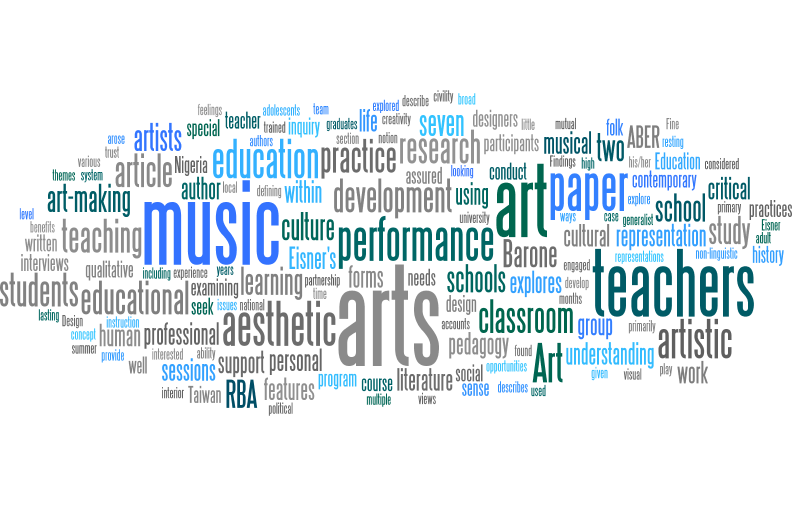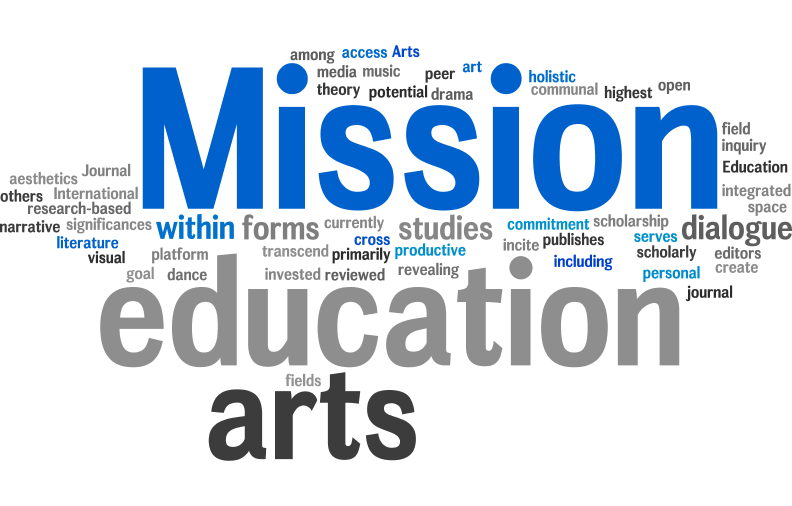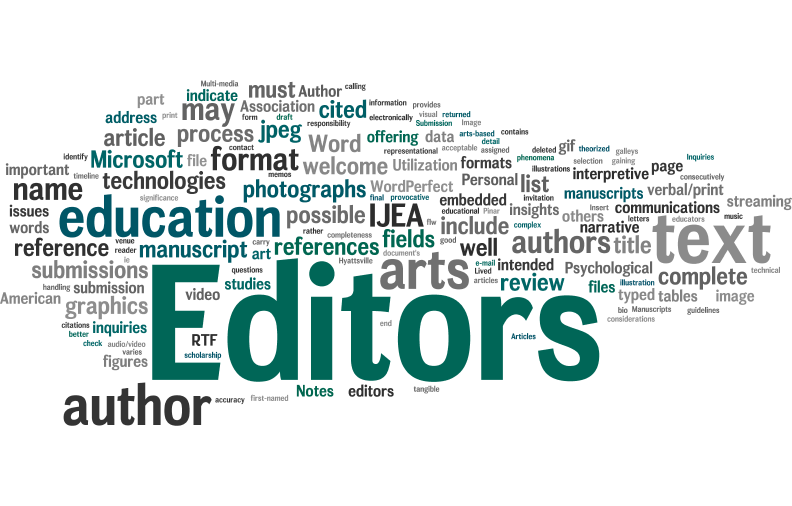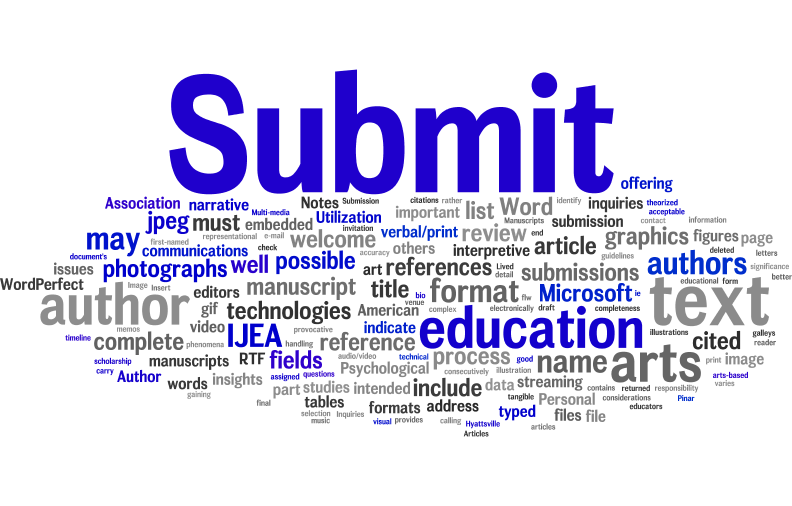2008 Volume 9
Articles and Abstracts

Articles
Volume 9 Number 1: Cuero, K. Venturing into unknown territory: Using aesthetic representation to understand reading comprehension.
Based on Elliot Eisner's notions of multiple forms of representation and Rosenblatt's aesthetic/efferent responses to reading, a teacher educator/researcher had her undergraduate students explore their connections, using aesthetic representations, to a course entitled Reading Comprehension. Each aesthetic representation revealed the complexities of Reading Comprehension in unique ways through a variety of media including: interior classroom design, culinary arts, quilting, music, and martial arts. The teacher educator invited five of the students from the course to participate in monthly collaborative inquiry sessions during the subsequent semester (lasting five months) where students articulated the aesthetic process they underwent. Benefits and applicability of using aesthetic representations in the university classroom are explored in the final section of the article.
Volume 9 Number 2: Prendergast, M. Teacher as performer: Unpacking a metaphor in performance theory and critical performative pedagogy.
This survey paper explores the interdisciplinary literature of performance theory and critical performative pedagogy in an attempt to consider metaphorical applications of performance to pedagogy. This exploration involves looking at teaching as performance in the broadest cultural sense of the word - interested more in efficacy of communication and mutual empathetic understanding - than in the more commonly-held economic, technological and political senses of performance which are more interested in setting, raising, and maintaining standards of efficiency and effectiveness (see McKenzie, 2001). In examining these issues in both performance studies and education, the conclusions are that educational researchers and teacher educators can benefit significantly from a critical awareness of the proliferation of metaphors for teaching as performance that highlight both aesthetic and socio-political challenges inherent in a life in the classroom.
Volume 9 Number 3: Edström, A-M. To rest assured: A study of artistic development.
This article concerns artistic development within the context of a Master of Fine Arts program in visual arts in Sweden, and presents an empirical study based on repeated interviews with a group of art students. The aim is to contribute to our present understanding of artistic development by focusing on changes in the relation between the student and his/her artistic work as part of their artistic development. The study describes and analyzes the character of these changes, within the theoretical frame of phenomenographic research on learning. The notion of 'resting assured' is used to describe the main characteristic of the qualitative change found in the relation between the student and his/her artistic work. To 'rest assured' refers to a state of trust in their own ability that the students develop. Findings are discussed from an educational theoretical perspective, emphasizing the connection between self-direction and resting assured.
Volume 9 Number 4: Ogunduyile, S. R., Kayode, F, & Ojo, B. Art and design practices in Nigeria: The problem of dropping out.
Despite interest in the arts, art and design practice in Nigeria continues to witness a downward trend. A new orientation and redirection of priorities, skills development, and patterns of practice that are not contradictory to the code of professional conduct and ethical procedures is contemplated. This paper groups the professionally trained artists and designers into two categories: the academic and the roadside artists. The various art and design schools are responsible for training of graduates in the various disciplines of Fine Art and Industrial Design such as in graphics, textiles and ceramics designs, interior decoration, printmaking, sculpture, painting, art history, and art education. It is expected that graduates in these options keep the professional banner flying and earn the profession very high societal repute through practice and ethics. It appears the reverse is presently the case, as most trained artists, designers, and craftsmen are jettisoning art practice for other jobs like banking, salesmanship, trading, general contractorship, or politics. Although factors impeding professional practices in Nigeria are intended to be highlighted, the paper also intends to promote the practice of Art and Design in Nigeria. Interactions between authors and dropout artists were analyzed in this paper. Craftsmen and industrial designers are encouraged to seek patronage in order to bring the profession to an enviable standard.
Volume 9 Number 5: Quinn, R. D. & Calkin, J. A dialogue in words and images between two artists doing Arts-Based Educational Research.
Over ten years ago, Tom Barone and Elliot Eisner (1997) described seven features of existing artistic approaches to educational inquiry. Their chapter dealt primarily with written, prosaic forms of Arts-Based Educational Research, or ABER, particularly educational criticism and narrative storytelling. In their concluding section, Barone and Eisner recognize the limitless possibilities of utilizing non-linguistic forms of representation to conduct ABER. It is the thesis of our paper that such forms might be considered Research-Based Art (RBA), given the shift in emphasis from linguistic to non-linguistic ways of representing what it is that we come to know about our world. While ABER is considerably broad, we seek to apply as specifically as possible Barone and Eisner's categorical structure to our own RBA. We do so by defining RBA, reconceptualizing Barone and Eisner's seven features as they pertain to RBA, and providing excerpts of our own dialog in applying the seven features to a specific aspect of Jamie's doctoral dissertation. Specifically, we discuss how our understanding and use of RBA compares and contrasts with Barone and Eisner's seven features of ABER.
Volume 9 Number 6: Chen, Y-T. & Walsh, D. J. Understanding, experiencing, and appreciating the arts: Folk pedagogy in two elementary schools in Taiwan.
Drawing on Bruner's notion of folk pedagogy, this research explores how Chinese aesthetic education is perceived and valued at two elementary schools in Taiwan. Using qualitative methods, the research explores how arts teachers guide children to experience arts through the arts curricula in school and the local culture. The study reveals that the two schools share a respect for nature and a concern for local culture. The seven arts teachers' folk pedagogy includes the desire to connect beauty and arts learning, develop children's aesthetic feelings, cultivate children's character, and integrate arts into everyday life. The teachers' shared views provide a broad picture of these folk beliefs in Taiwan as well as a cultural lens for examining aesthetic education in Taiwan and the larger Asian culture.
Volume 9 Number 7: Rolling, Jr., J. H. Sites of contention and critical thinking in the elementary art classroom: A political cartooning project.
In this paper, the author explores the concept of childhood as a social category that impedes the perception of youngsters as critical thinkers in a visual culture. The author interrogates regularities within contemporary public schooling that work to represent the intellectual and cultural development of youngsters as the project of adult industry. Contrary to this representation, the author recounts the critical awareness and personal agency exercised by a group of 4th graders who engaged in a political cartooning exercise while examining the theme of social justice. The article includes an examination of the social construction of the concept of childhood as it intersects the discourse of Western socio-cultural superiority and the opening of sites of contention as a pedagogical strategy.
Volume 9 Number 8: Upitis, R., Smithrim, K., Garbati, J., & Ogden, H. The impact of art-making in the university workplace.
Beginning in the summer of 2002, a Queen's University arts education research team has met weekly for art-making sessions. This research paper describes how this long-term art-making practice has influenced the personal and professional lives of the team, based on semi-standardized interviews with six participants and one observer of the art-making group. Several key themes arose from the analysis, including the growth and deepening of relationships amongst participants, the sense of losing track of time while engaged in art-making, and the importance of art-making sessions bringing a temporary reprive from work-related demands. These themes resonate strongly with the scholarly literature and empirical work on embodied knowing, creativity, and non-formal adult learning.
Volume 9 Number 9: Bell, A. P. The heart of the matter: Composing music with an adolescent with special needs.
As a support worker for adolescents with special needs, I have found that they have few opportunities to play music. While previous research emphasizes that students with special needs can enjoy music in multiple capacities, little has been written about their ability to play, improvise, or compose. I employed a qualitative approach for this case study in which a 17-year-old male with Down syndrome attended two 40-minute music sessions a week over the course of three months with me as the researcher and musical accompanist. Video was used to document the teacher-learner experience as the participant explored collaborative improvising and computer-based recording. General suggestions are made for supporting adolescents with special needs in music.
Volume 9 Number 10: Pitts, S. Extra-curricular music in UK schools: Investigating the aims, experiences and impact of adolescent musical participation.
This article uses contemporary and retrospective accounts of extra-curricular music-making in schools to evaluate the extent to which performance opportunities in the teenage years can shape lifelong engagement in music. Empirical evidence is presented from a two phase study: the first looking at a high school musical production through questionnaires and audio diaries; the second using written life history accounts to gather memories of school music and its lasting impact. The experiences of participants and non-participants are considered, and the benefits and costs of the large-scale performance events which characterise British secondary school music are evaluated in a discussion of the future of extra-curricular music in changing musical and educational times.
Volume 9 Number 11: Andrews, B. W. The odyssey project: Fostering teacher learning in the arts.
Canada's national cultural institutions and its largest bilingual university entered into a partnership to offer an integrated arts summer program for classroom teachers which featured artists collaborating with teachers to enhance their arts learning and improve their instructional expertise. This inquiry focused on a description of those dimensions of an arts partnership which foster teachers' personal arts learning. Findings indicate that an emerging group culture within the class, characterized by a sense of community, comfort and mutual support, fosters trust, emotional openness and personal risk-taking. These dimensions of the program enabled teachers to explore their own creativity, examine their thoughts and feelings, acknowledge each other's views, understand different perspectives, and engage successfully in artistic activities.
Volume 9 Number 12: Wiggins, R. A. & Wiggins, J. Primary music education in the absence of specialists.
Many schools worldwide rely exclusively on generalist teachers for music instruction at the primary level yet we know little about these teachers, their preparation for the task, and what they actually do in the classroom when teaching music. The extant literature in this area has focused primarily on boosting generalist teachers' confidence to teach music. Little attention has been given to their musical knowledge base and thus their competence for teaching music. This paper reports the results of an investigation of music teaching in one national school system that has almost no specialist teachers at the primary level. Drawing from questionnaire data augmented by classroom observations and interviews, the authors describe the nature and quality of music teaching in this system highlighting the issues that arose for these teachers.
Interludes
Volume 9 Interlude 1: Rolling, Jr., J. H. Rethinking relevance in art education: Paradigm shifts and policy problematics in the wake of the Information Age.
Volume 9 Interlude 2: Kindler, A. M. Art, creativity, art education and civil society.
Book Reviews
Volume 9 Review 1: Barber, D. Somaesthetic awareness and artistic practice: A review essay.
Shusterman, Richard. (2008). Body consciousness: A philosophy of mindfulness and somaesthetics. Cambridge; New York: Cambridge University Press.
Volume 9 Review 2: Beudert, L. Spectacle pedagogy: Art, politics, and visual culture: A review essay.
Garoian, C. R. & Gaudelius, Y. M. (2008). Spectacle pedagogy: Art, politics, and visual culture. New York: State University of New York Press.



